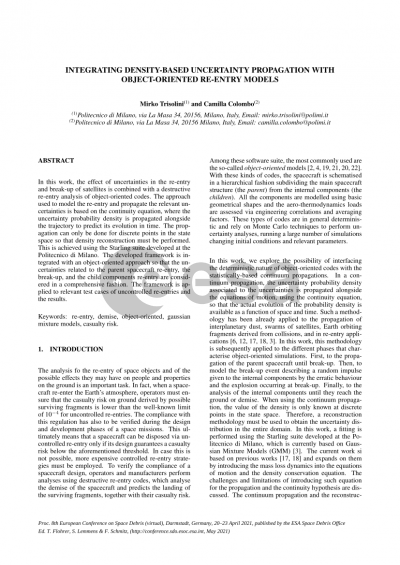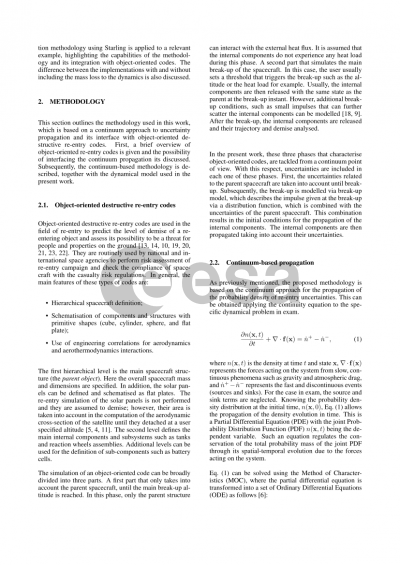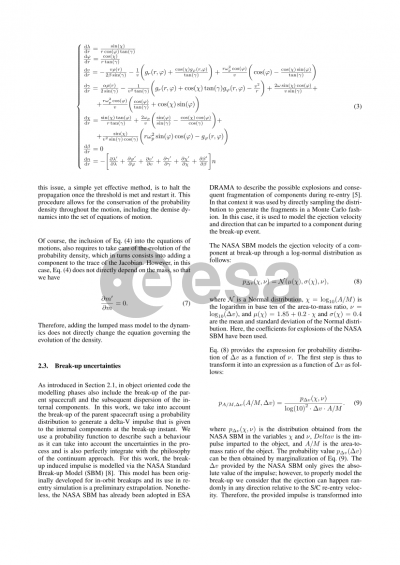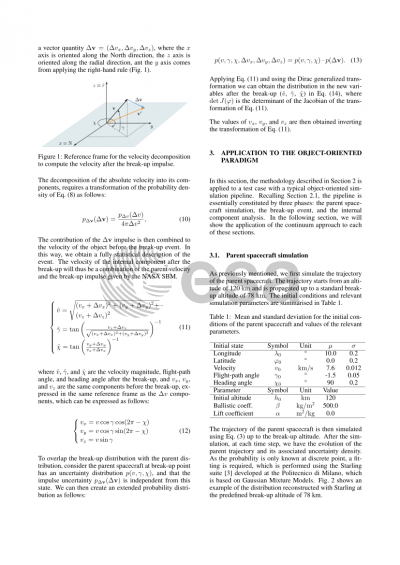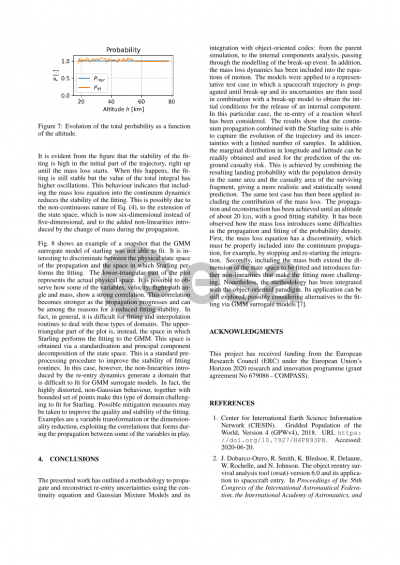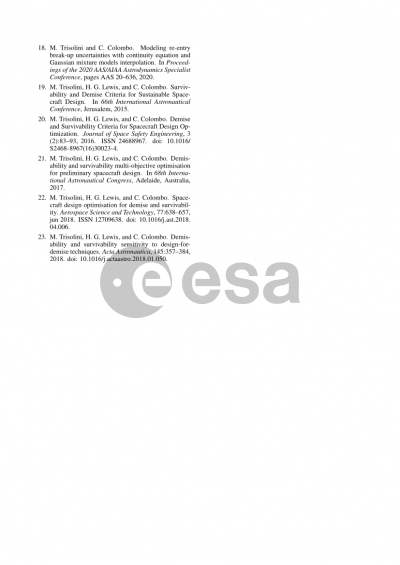Document details

Abstract
The study and prediction of the re-entry and demise of spacecraft and rocket bodies is a challenging task. Several factors may influence the accuracy of these predictions, such as the knowledge of the initial entry conditions, the ballistic coefficient of the satellite, the modelling of the heat load affecting the S/C structure and components. The uncertainties associated with these parameters can have a substantial effect on the evolution of the re-entry trajectory and on the risk the surviving objects may pose to people and properties on the ground. With the increase of the space activity, the number of objects in orbit is destined to grow rapidly and, with it, the frequency of re-entries. This underlines the importance of statistically based re-entry simulations for better studying of the demisability of re-entering objects.
In this work, the effect of uncertainties in the re-entry and break-up of satellites is combined with the destructive re-entry analysis of object-oriented codes. The approach used to model the re-entry and propagate the relevant uncertainties is based on the continuity equation, where the uncertainty probability density is propagated alongside the trajectory to predict its evolution in time. The propagation can only be done for discrete points in the state space so that density reconstruction must be performed. This is achieved using the Starling suite developed at the Politecnico di Milano. The developed framework is integrated with an object-oriented approach for the analysis of the re-entry thermodynamics so that the uncertainties related to the parent spacecraft re-entry, the break-up, and the child components re-entry are considered in a comprehensive fashion. The proposed framework is applied to relevant test cases of uncontrolled re-entries simulating the trajectory of the parent spacecraft until break-up and the trajectory of selected child components such as reaction wheels and tanks once they are released. The results will be compared to a standard Monte Carlo approach.
Preview
